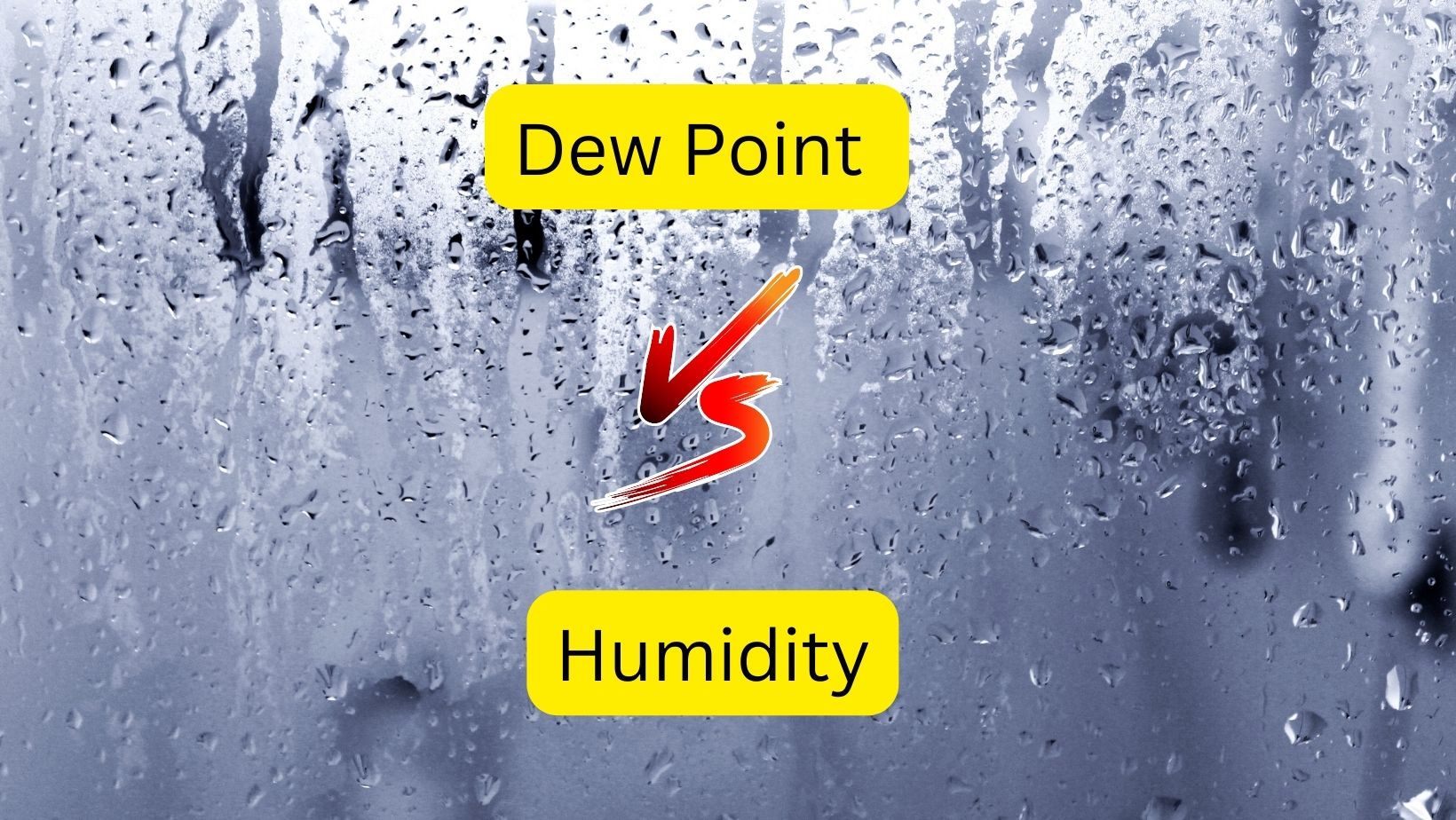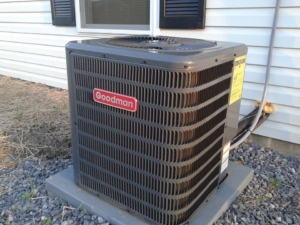What is Dew Point: Understanding the Invisible Moisture Marker

When you step outside on a humid summer day and feel the air heavy with moisture, you are experiencing the effects of dew point, a critical yet often overlooked weather parameter. Understanding dew point is important not only for weather enthusiasts but also for anyone looking to grasp its impact on daily life. In this blog, we will explore the science behind dew point, its relationship with weather patterns, its effects on human comfort, and its significance in various contexts.
The Science Behind Dew Point
To comprehend dew point fully, let’s delve deeper into the basics of humidity and water vapor in the atmosphere. Understanding these concepts is crucial in grasping the significance of the dew point temperature and its impact on weather and our daily lives.
Humidity is a key indicator of the amount of moisture present in the air. It is often expressed as a percentage and represents the ratio of the actual water vapor content in the air to the maximum amount of water vapor the air can hold at a specific temperature. When the humidity is high, the air contains a substantial amount of moisture, whereas low humidity signifies drier air.
Water vapor, on the other hand, is the invisible gaseous form of water. It is water in its gas state, a product of evaporation from bodies of water, such as oceans, lakes, and rivers, as well as transpiration from plants. When the sun’s energy heats the Earth’s surface, it causes water to evaporate and rise into the atmosphere in the form of water vapor.
The concept of dew point temperature is essential in understanding the behavior of water vapor in the atmosphere. As the temperature drops, the air’s ability to hold water vapor decreases. When the air reaches its maximum capacity to hold moisture, it becomes saturated. The temperature at which this saturation occurs is known as the dew point.
Imagine a warm summer day with high humidity. As the sun sets and the air cools down, the temperature may eventually reach the dew point. At this critical juncture, the air becomes saturated with moisture, and it can no longer retain all the water vapor it contains. As a result, the excess moisture starts to condense into tiny water droplets on surfaces like grass, leaves, and cars, creating what we commonly know as dew.
If the dew point occurs at or near the surface, it can lead to the formation of fog. Fog is essentially a cloud at ground level, and it occurs when the dew point is met and condensation takes place near the Earth’s surface. Fog can significantly reduce visibility, impacting transportation and daily activities.
When moist air rises in the atmosphere due to various factors such as heating from the sun or encountering a cold front, it cools down. As it cools, the air approaches its dew point, causing water vapor to condense into tiny water droplets or ice crystals. These droplets or crystals gather around particles in the air, such as dust or aerosols, and form clouds. The type of cloud that forms depends on the altitude, temperature, and other atmospheric conditions.
Understanding the dew point temperature and its relationship with humidity and water vapor is fundamental for meteorologists and weather forecasters. By monitoring the dew point, they can anticipate changes in weather patterns, the likelihood of precipitation, and the potential for fog formation. It also helps them assess the risk of severe weather events, such as thunderstorms or winter storms, by analyzing the moisture content in the air.
In our daily lives, being aware of the dew point can assist us in planning outdoor activities. High dew points often result in muggy and uncomfortable conditions, while lower dew points create a more pleasant environment. Additionally, understanding the dew point’s influence on cloud and fog formation can aid travelers and pilots in making safe and informed decisions.
Factors Affecting Dew Point
Temperature:
– Temperature is a primary factor influencing the dew point. As temperatures drop, the air’s capacity to hold water vapor decreases.
– Colder air has a lower saturation point, meaning it becomes saturated with moisture at a higher relative humidity compared to warmer air.
– When the temperature cools down to the dew point, the air reaches a state of saturation, leading to the condensation of water vapor into dew, fog, or clouds.
Atmospheric Pressure:
– Atmospheric pressure also plays a role in dew point changes. Changes in pressure can impact the dew point temperature.
– Higher atmospheric pressure can raise the dew point. As pressure increases, the air molecules are forced closer together, allowing them to hold more water vapor before reaching saturation.
– Conversely, low atmospheric pressure can lower the dew point. Lower pressure means the air molecules are more spread out, reducing the amount of water vapor the air can hold before becoming saturated.
Absolute Water Vapor Content:
– The absolute water vapor content in the air is a critical factor affecting the dew point.
– The higher the water vapor content in the air, the higher the dew point temperature will be.
– Locations with higher humidity levels tend to have higher dew points, as there is more moisture available for the air to become saturated.
Relative Humidity and Dew Point:
– Relative humidity and dew point are related but distinct concepts. While both are measures of moisture in the air, they provide different insights.
– Relative humidity is a percentage indicating how close the air is to reaching its saturation point at a given temperature. It is dependent on both the temperature and the absolute water vapor content.
– Dew point, on the other hand, is the actual temperature at which saturation occurs, and it remains constant regardless of changes in temperature or relative humidity.
-Dew Point’s Impact on Weather:
– The dew point plays a significant role in weather forecasting and understanding atmospheric stability.
– When the dew point is close to the actual temperature, the air is nearly saturated, and this can lead to the formation of clouds, fog, or precipitation.
– Meteorologists often use dew point to assess the likelihood of thunderstorms, heavy rainfall, or snow, as high dew points indicate abundant moisture in the atmosphere.
Dew Point and Human Comfort:
– Dew point has a direct impact on human comfort during warm weather.
– Higher dew points make the air feel more oppressive and uncomfortable because perspiration evaporates less effectively from the skin.
– In contrast, lower dew points contribute to a more pleasant and refreshing feeling as perspiration can evaporate more efficiently.
Dew Point and Outdoor Activities:
– Being aware of the dew point is valuable for planning outdoor activities.
– High dew points can make physical activities challenging and potentially dangerous, as the body may struggle to cool down effectively.
– During heatwaves or high dew point periods, it is essential to stay hydrated and seek shade or air-conditioned environments.
Monitoring Dew Point:
– Various instruments and devices are used to measure and monitor the dew point accurately.
– Psychrometers, hygrometers, and dew point calculators are common tools used in weather stations and meteorological applications.
– Accurate dew point measurements are vital for weather forecasts, agricultural practices, aviation, and other sectors relying on weather-related data.
Dew Point and Indoor Environment:
– Monitoring the dew point is not only relevant for outdoor activities but also for maintaining a comfortable and healthy indoor environment.
– Homes and buildings with high indoor humidity levels can lead to condensation on windows and walls, potentially causing mold and mildew issues.
– Proper ventilation and humidity control can help maintain an optimal indoor dew point and improve indoor air quality.
Dew Point vs. Relative Humidity
Dew point and relative humidity are both measures of moisture content in the air, but they differ in their approach. Relative humidity is the percentage of moisture in the air relative to the maximum amount the air can hold at a given temperature. On the other hand, dew point is the temperature at which air becomes saturated. Understanding both measurements is crucial, as they provide complementary insights into the atmospheric conditions.
Dew Point and Weather
Dew point plays a vital role in weather forecasting and prediction. Meteorologists often use dew point to understand the likelihood of cloud formation, fog, or precipitation. When the dew point is close to the actual temperature, the air is nearly saturated, indicating a high probability of fog or rain. High dew points are associated with muggy and uncomfortable weather, while lower dew points contribute to drier and more pleasant conditions.
Dew Point and Human Comfort
The dew point also has a direct impact on human comfort. When the dew point is high, perspiration evaporates more slowly, making us feel hotter and more uncomfortable. Conversely, during periods of lower dew points, we tend to feel cooler and more refreshed. Understanding the relationship between dew point and perceived temperature is crucial for planning outdoor activities and staying safe during heatwaves.
Measuring Dew Point
Various instruments and techniques are used to measure dew point accurately. Psychrometers, hygrometers, and dew point calculators are commonly employed to determine this critical weather parameter. It is essential to have precise dew point measurements, as they offer valuable insights into weather conditions, especially for agriculture, aviation, and outdoor activities.
Psychrometers:
– Psychrometers are traditional instruments used to measure dew point and relative humidity.
– They consist of two thermometers: a dry bulb thermometer to measure air temperature and a wet bulb thermometer with a damp wick.
– By comparing the temperatures of the dry and wet bulb thermometers, the relative humidity and dew point can be determined using psychrometric charts or calculations.
Hygrometers:
– Hygrometers are electronic devices designed to measure humidity levels in the air, including dew point.
– They utilize various methods such as capacitance, resistance, or condensation to determine the amount of moisture present in the air.
– Advanced hygrometers can display the dew point directly, making it easier for users to understand and interpret the data.
Dew Point Calculators:
– Dew point calculators are software tools or online applications that use temperature and relative humidity data to calculate the dew point.
– They are user-friendly and provide quick and convenient dew point estimates without the need for physical instruments.
– Dew point calculators are widely available and are often used by weather enthusiasts, outdoor enthusiasts, and professionals in various industries.
Importance of Precise Dew Point Measurements:
– Accurate dew point measurements are crucial for weather forecasting and meteorological applications.
– Dew point data aids in understanding atmospheric stability and predicting weather conditions, such as the likelihood of fog, clouds, or precipitation.
– In agriculture, precise dew point information helps farmers make informed decisions about planting, irrigation, and pest control.
– For aviation, dew point data is essential for flight planning and assessing potential icing hazards at different altitudes.
– Outdoor activities, especially in extreme weather conditions, can be impacted by the dew point. Having accurate measurements allows individuals to take necessary precautions and plan accordingly.
Dew Point and Plant Health:
– Dew point measurements are vital for understanding plant health and moisture stress.
– Early morning dew formation can provide crucial water supply to plants, especially during dry periods.
– Monitoring the dew point helps farmers and gardeners determine if irrigation is necessary and whether plants are at risk of dehydration or disease.
Dew Point and Industrial Applications:
– Many industrial processes are sensitive to changes in humidity and dew point.
– Controlling dew point is critical in industries such as pharmaceuticals, electronics manufacturing, and food processing, where excess moisture can damage products or compromise quality.
– Accurate dew point measurements ensure optimal conditions are maintained during production and storage processes.
Dew Point and HVAC Systems:
– For indoor environments, HVAC (Heating, Ventilation, and Air Conditioning) systems play a role in maintaining optimal comfort and air quality.
– Monitoring the dew point helps HVAC systems regulate humidity levels, preventing issues like condensation, mold growth, and discomfort for occupants.
Dew Point and Energy Efficiency:
– Understanding the dew point can contribute to energy-efficient practices.
– By maintaining indoor humidity levels at an appropriate range, energy consumption in cooling or heating processes can be optimized.
Research and Scientific Studies:
– In research and scientific studies, precise dew point measurements are necessary for various experiments and data analysis.
– Meteorologists, climatologists, and environmental scientists rely on dew point data to better understand climate patterns and trends.
Dew Point and Condensation
Dew point is intimately linked with the process of condensation, which leads to the formation of dew, frost, or rain. When the temperature drops to or below the dew point, water vapor in the air condenses into tiny water droplets on surfaces, creating dew. Similarly, frost forms when the temperature is below freezing, and the dew point is also below freezing. Understanding these processes can provide valuable knowledge for gardeners, farmers, and weather enthusiasts.
Dew Point and Health
High dew point days can have significant effects on human health, particularly during heatwaves. The body’s ability to cool down through perspiration is impaired, leading to heat-related illnesses such as heat exhaustion and heatstroke. It is necessary to take precautions during such conditions, staying hydrated and seeking shelter in cool environments.
Conclusion
In conclusion, dew point is a fundamental weather parameter with far-reaching effects on our daily lives. Understanding the science behind dew point, its relationship with weather patterns, its impact on human comfort, and its significance in various fields can help us make informed decisions and stay prepared for changing weather conditions. So the next time you step outside and feel the humidity in the air, remember that you are experiencing the invisible marker of moisture—the dew point.





